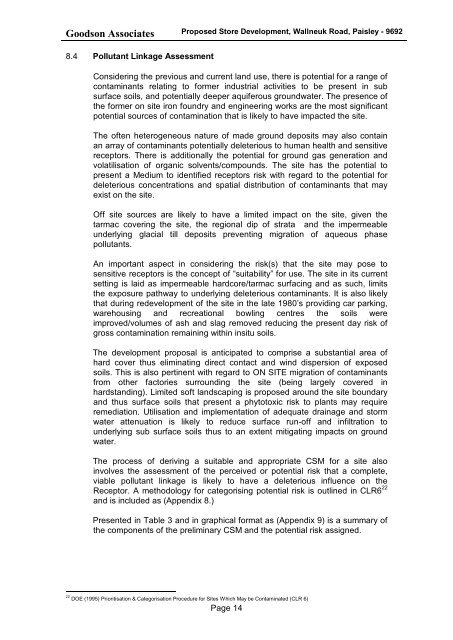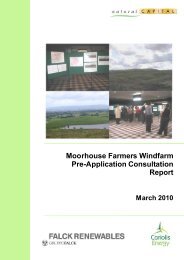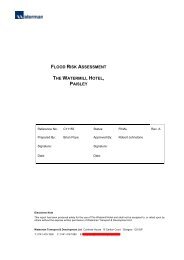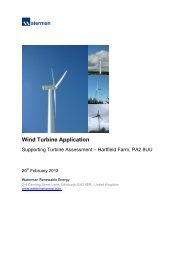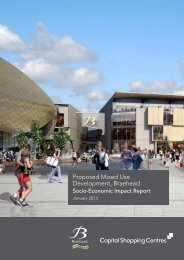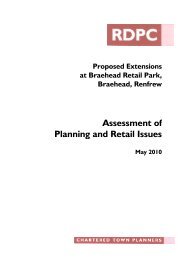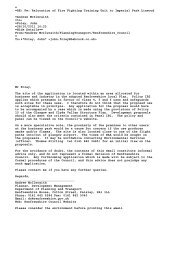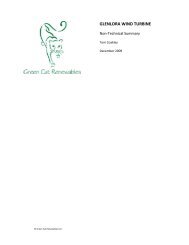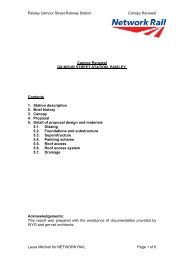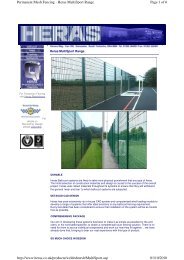Supporting documents - Renfrewshire Council
Supporting documents - Renfrewshire Council
Supporting documents - Renfrewshire Council
You also want an ePaper? Increase the reach of your titles
YUMPU automatically turns print PDFs into web optimized ePapers that Google loves.
Goodson Associates<br />
8.4 Pollutant Linkage Assessment<br />
Proposed Store Development, Wallneuk Road, Paisley - 9692<br />
Considering the previous and current land use, there is potential for a range of<br />
contaminants relating to former industrial activities to be present in sub<br />
surface soils, and potentially deeper aquiferous groundwater. The presence of<br />
the former on site iron foundry and engineering works are the most significant<br />
potential sources of contamination that is likely to have impacted the site.<br />
The often heterogeneous nature of made ground deposits may also contain<br />
an array of contaminants potentially deleterious to human health and sensitive<br />
receptors. There is additionally the potential for ground gas generation and<br />
volatilisation of organic solvents/compounds. The site has the potential to<br />
present a Medium to identified receptors risk with regard to the potential for<br />
deleterious concentrations and spatial distribution of contaminants that may<br />
exist on the site.<br />
Off site sources are likely to have a limited impact on the site, given the<br />
tarmac covering the site, the regional dip of strata and the impermeable<br />
underlying glacial till deposits preventing migration of aqueous phase<br />
pollutants.<br />
An important aspect in considering the risk(s) that the site may pose to<br />
sensitive receptors is the concept of “suitability” for use. The site in its current<br />
setting is laid as impermeable hardcore/tarmac surfacing and as such, limits<br />
the exposure pathway to underlying deleterious contaminants. It is also likely<br />
that during redevelopment of the site in the late 1980’s providing car parking,<br />
warehousing and recreational bowling centres the soils were<br />
improved/volumes of ash and slag removed reducing the present day risk of<br />
gross contamination remaining within insitu soils.<br />
The development proposal is anticipated to comprise a substantial area of<br />
hard cover thus eliminating direct contact and wind dispersion of exposed<br />
soils. This is also pertinent with regard to ON SITE migration of contaminants<br />
from other factories surrounding the site (being largely covered in<br />
hardstanding). Limited soft landscaping is proposed around the site boundary<br />
and thus surface soils that present a phytotoxic risk to plants may require<br />
remediation. Utilisation and implementation of adequate drainage and storm<br />
water attenuation is likely to reduce surface run-off and infiltration to<br />
underlying sub surface soils thus to an extent mitigating impacts on ground<br />
water.<br />
The process of deriving a suitable and appropriate CSM for a site also<br />
involves the assessment of the perceived or potential risk that a complete,<br />
viable pollutant linkage is likely to have a deleterious influence on the<br />
Receptor. A methodology for categorising potential risk is outlined in CLR6 22<br />
and is included as (Appendix 8.)<br />
Presented in Table 3 and in graphical format as (Appendix 9) is a summary of<br />
the components of the preliminary CSM and the potential risk assigned.<br />
22 DOE (1995) Prioritisation & Categorisation Procedure for Sites Which May be Contaminated (CLR 6)<br />
Page 14


